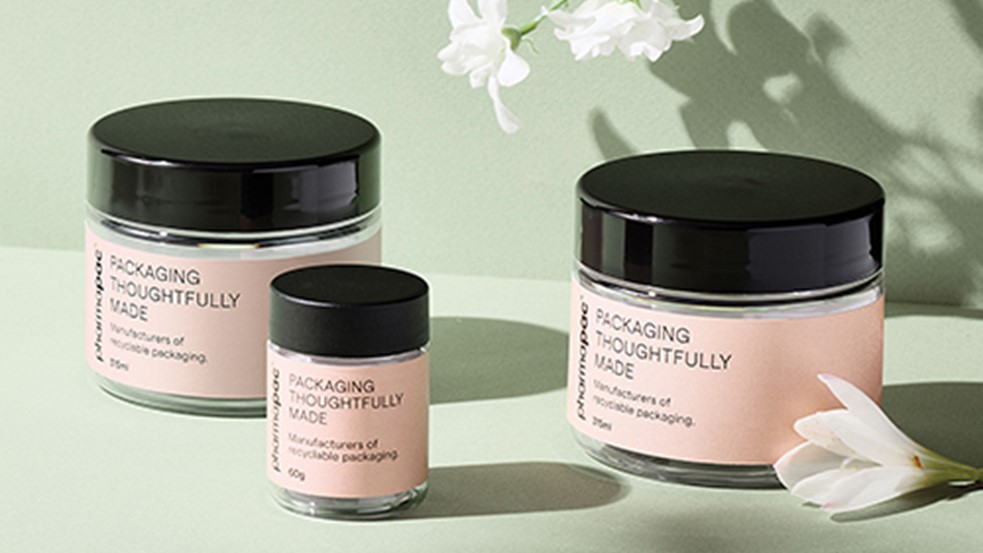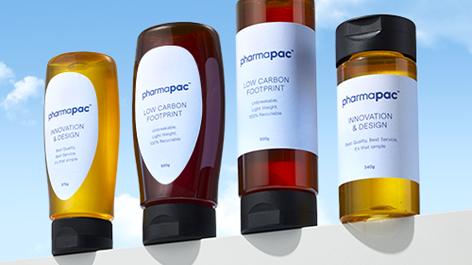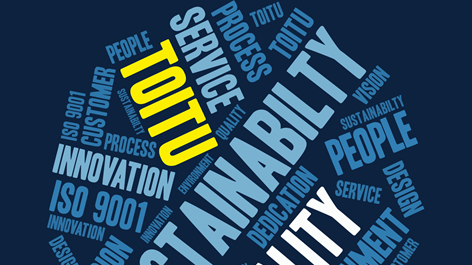At Pharmapac we’re committed to continuous improvement, so we’re always looking for new innovations and designs in order to be more sustainable and to provide greater value for our customers.
One of the ways we’re doing this is by broadening our range of PET products available. After much demand, we have expanded the range to include a smaller 60gm pot, as well as the newest sizes – the 250gm, 400gm and 500gm PET pots.
These new pot sizes come in clear and amber and provide even more variety to the supply of PET pots, jars and flasks available from Pharmapac.
Applications and uses of our PET Pots
The demand to manufacture a greater range of sizes of these pots came from customers in the food and the health and beauty sectors. PET is suitable for contact with food and conforms with FDA and European requirements.
The smaller 60gm pots are ideal for eye creams, gels, honey, etc. The 250gm, 400gm and 500gm are suitable for honey, FMCG, dry goods like tea, powders and creams.
The benefits of using PET
There are significant benefits of using PET packaging:
- PET is lighter than alternative materials like glass.
Because PET is much lighter than glass, it is easier and more economical to ship. Not only are freight costs lower for product suppliers and their customers, but shipping PET packaging is also better for the environment due to its lightweight nature. A glass honey jar is up to six times heavier than Pharmapac’ s PET equivalent (based on a 250gm honey jar). The heavier the weight to be transported, the more fossil fuels are used to move products.
- PET is a durable packaging option.
PET packaging is a durable and safe option when we consider its very low breakage rates. This is a significant factor as PET pots, jars and flasks are commonly used for food, supplements, health and beauty products. Products contained in PET jars and pots not only require a lot less protective packaging when shipped, but there is also minimal product spoilage when PET packaging is used. Breakage is an issue with other types of packaging in shipment as well as when it’s on the production line. Any time there is a breakage (for example, with glass) there is downtime in production while the issue is fixed, and health and safety checks are completed to ensure there are no contaminants in the packaging produced.
- PET has a lower carbon footprint than glass.
A recent research study by Thinkstep for Tetra Pak compared the carbon footprint of eight different packaging options. These included glass, PET (#1), recycled rPET (#1), HDPE (#2), and carton. Glass had the highest carbon footprint by a significant margin. In the study comparing the carbon footprint of packaging for a litre of milk, the carbon footprint of glass was 0.385kg CO2e, while the footprint of PET (#1) was 0.251kg CO2e and rPET even lower at 0.105kg CO2e.
When we look at the sustainability of packaging, we consider its full life cycle from cradle to grave. We look at the environmental footprint over its entire life cycle and the greenhouse gases (GHGs) the packaging generates across its life cycle. This includes how it is manufactured, transported, used and disposed of at end-of-life. All of Pharmapac’s PET POT jars and lids are made locally in New Zealand rather than being imported like its honey glass jar equivalent, which increases its carbon footprint.
The new range of PET packaging options available offers benefits for the customers, end users and the planet. If you’d like to know more about the Pharmapac PET packaging or custom options, please get in touch.



